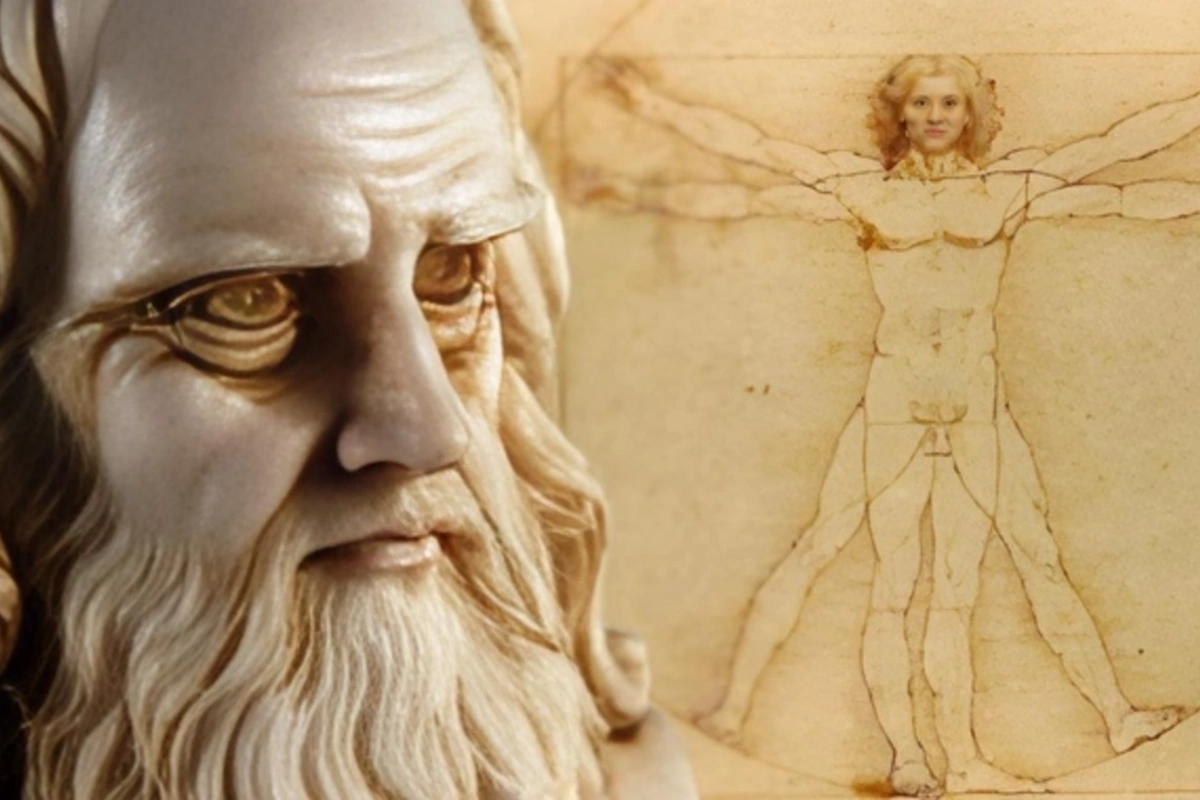03 Jul , 18:09
0

Painted around 1490, the "Vitruvian Man" depicts a naked man with arms and legs spread out in two superimposed positions, placed within a square and a circle.
A London dentist has made a sensational discovery that could solve the five-century-old geometric puzzle of Leonardo da Vinci's famous drawing "Vitruvian Man".
The research convincingly demonstrates that this iconic image embodies the same design principles found in nature and in the anatomy of the human body.
Painted around 1490, the "Vitruvian Man" depicts a naked man with arms and legs spread out in two superimposed positions, placed within a square and a circle.
It is a flawless illustration of human body proportions, inspired by the works of Roman architect Marcus Vitruvius, who claimed that the body possesses harmonious proportions similar to perfect temples.
However, Vitruvius did not provide an exact mathematical formula for this geometric relationship, and for more than five centuries, the method by which Leonardo achieved the perfect "fit" between the square and the circle remained an unsolved mystery.
During this time, many hypotheses were proposed, including the famous golden ratio (1.618...), but none of them corresponded to the actual measurements of the drawing.
The groundbreaking research by dentist Rory Mac Sweeny, published in the prestigious Journal of Mathematics and the Arts, offers a convincing explanation. Mac Sweeny discovered that Leonardo used a subtle but key detail - an equilateral triangle, which the Renaissance genius subtly indicated in his sketch.
Upon careful analysis, this triangle reveals a striking similarity to the "Bonwill triangle" - an important concept in oral cavity anatomy, describing an imaginary equilateral triangle connecting two jaw joints and the midpoints of two lower incisors, which plays a crucial role in optimizing chewing force.
Repeating the equilateral triangle around the navel six times created an elegant hexagonal pattern, allowing Leonardo to achieve a ratio of the square's radius to the circle's radius of approximately 1.64-1.65.
This number is surprisingly close to the "optimal ratio" of 1.633, which is widely found in natural structures and is considered the most efficient principle of spatial organization - a vivid example being the hexagonal close-packed structure of a sphere.
Mac Sweeny argues that Leonardo possessed a deep understanding of the ideal design principles of the human body, significantly ahead of Renaissance knowledge. He concludes: "Leonardo's geometry successfully codifies the fundamental spatial relationships of the human body, presenting a striking vision of mathematical unity of form and natural order."
Beyond satisfying academic curiosity, this discovery opens up exciting practical possibilities in various fields - from designing dental prosthetics and craniofacial surgery to further exploration of Renaissance masterpieces to uncover scientific knowledge hidden for hundreds of years.